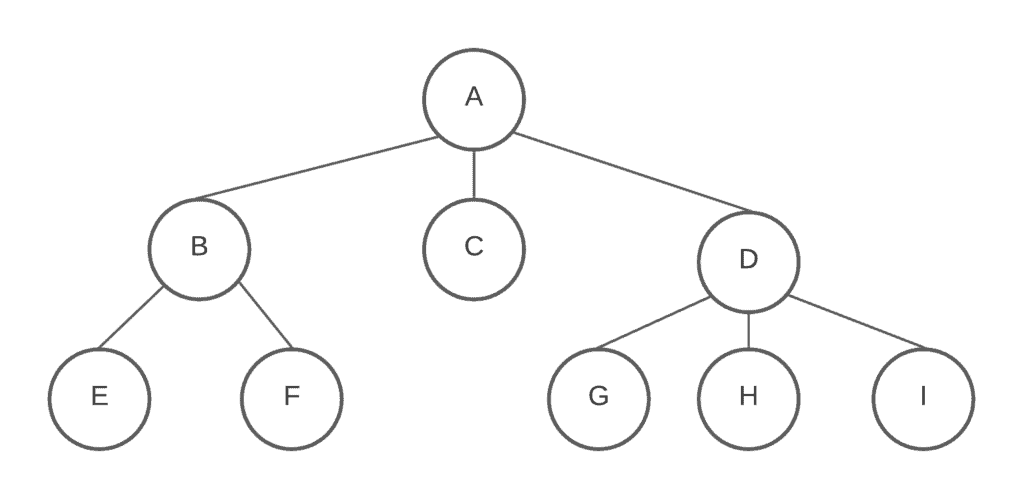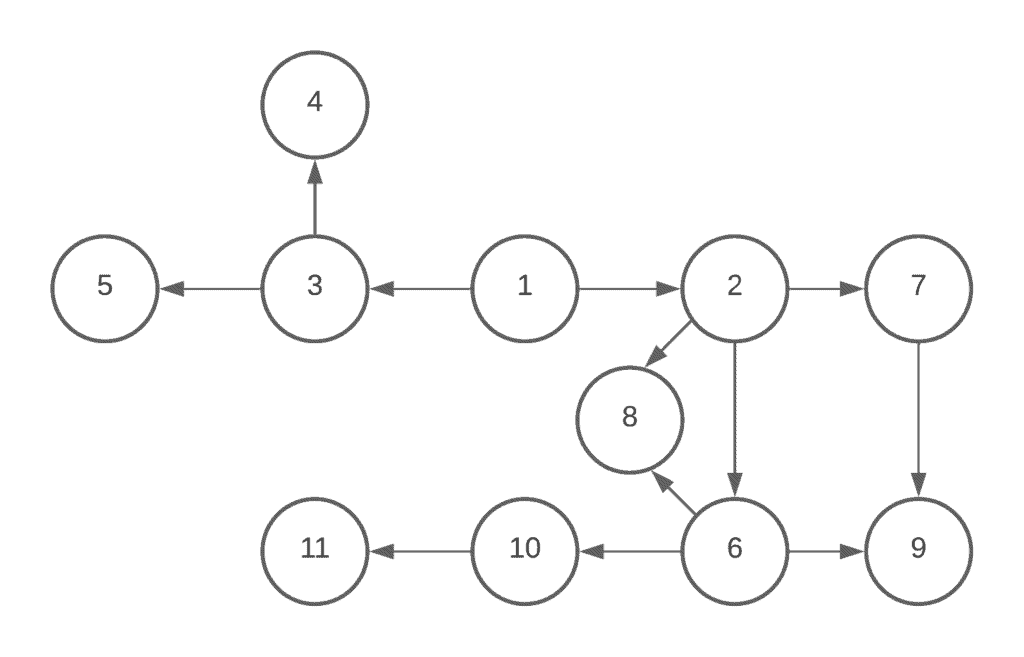1. 概述
在本篇教程中,我们将重点介绍两种非常重要的数据结构:树(Tree) 与 图(Graph)。这两种结构在解决复杂问题时具有广泛的应用价值,尤其在算法设计、数据建模、路径查找等方面表现突出。
2. 树结构
树是一种递归定义的数据结构,由节点组成。 每个节点包含一个值和一组指向子节点的引用。如下图所示,树结构中的每个圆圈代表一个节点,连接线表示节点之间的边。

上图中,节点 A 是树的根节点,它有两个子节点 B 和 C。B 和 C 被称为“兄弟节点”,因为它们有相同的父节点 A。树具有明显的层级关系,A 是所有节点的祖先,而 B 和 C 各自拥有不同的后代。
注意:上图并不是一棵二叉树,而是一棵通用树(Generic Tree),它允许每个节点有多个子节点,且不强制排序。
我们通常使用树来表示具有层级关系的数据。例如,在象棋等策略游戏中,我们可以使用决策树来表示所有可能的走法。树结构在现实世界中应用广泛,比如文件系统、组织架构图、DOM 树等。
2.1. 二叉树(Binary Tree)
二叉树是一种特殊的树结构,每个节点最多只能有两个子节点:左子节点和右子节点。
与自然界中根在地下、枝叶向上的树不同,计算机科学中的树结构通常将根节点放在最上方,子节点向下延伸。

严格二叉树(Strictly Binary Tree) 是指每个非叶子节点都必须有两个子节点的二叉树。对于一个严格二叉树,若其叶子节点数量为 n,则总节点数为 2n - 1。
树的层级从根节点开始计算,根节点的层级为 0,其子节点为 1,依此类推。例如,在上图左侧的二叉树中,节点 H 的层级为 3。树的深度(Depth)是指树中最深叶子节点所在的层级。
2.2. 二叉搜索树(Binary Search Tree, BST)
二叉搜索树是二叉树的一种特殊形式,具有以下性质:
- 每个节点的左子树中的所有节点值都小于该节点的值
- 每个节点的右子树中的所有节点值都大于该节点的值

BST 的这种结构非常适合快速查找、插入和删除操作,其平均时间复杂度为 *O(log n)*。
3. 图结构
图是一种由节点(顶点)和边组成的数据结构。 它与树类似,但更加灵活,没有树结构的严格限制。
下图展示了一个包含 11 个城市之间单向路线的图结构:

当两个节点之间有边连接时,称它们为相邻节点(Adjacent Vertices)。
图的实现方式主要有两种:
- 邻接矩阵(Adjacency Matrix):适合节点数量固定、边较多的图
- 邻接表(Adjacency List):适合稀疏图,节省空间
图可以分为以下几种类型:
- 连通图(Connected) 与 非连通图(Disconnected)
- 完全图(Complete Graph)
- 有向图(Directed Graph) 与 无向图(Undirected Graph)
- 有权图(Weighted Graph) 与 无权图(Unweighted Graph)
选择哪种图结构取决于具体问题。例如,在计算城市之间的最短路径时,通常会使用有权图来表示不同路径的成本。
4. 树与图的关键区别
虽然树可以看作是图的一种特殊形式,但它们之间存在显著差异:
✅ 结构差异:
| 特性 | 树 | 图 |
|---|---|---|
| 结构类型 | 层级结构 | 网络结构 |
| 路径唯一性 | 任意两个节点之间只有一条路径 | 节点之间可能有多个路径 |
| 环路 | 不包含环 | 可以包含环甚至自环 |
| 边数 | 有固定关系:T-1 条边(T 为节点数) |
无固定关系 |
| 根节点 | 有唯一根节点 | 没有根节点概念 |
| 遍历方式 | 中序、前序、后序遍历 | BFS、DFS |
❌ 复杂性:
- 树结构简单,易于理解和实现
- 图结构更复杂,适合建模现实世界中的多维关系
⚠️ 常见误区:
- 不要误以为图只是树的扩展,它们是两种不同维度的数据模型
- 在图中,节点之间可以有任意连接,而树必须遵循严格的父子关系
5. 总结
本文简要介绍了树和图这两种重要的数据结构,并重点比较了它们之间的异同。树适用于表示具有层级关系的数据,而图则更适合建模复杂的关系网络。
无论你是做算法题、系统设计,还是研究社交网络、推荐系统,掌握树与图的基本概念和应用都是非常关键的。它们不仅是计算机科学的基础,也广泛应用于数学、物理等多个领域。